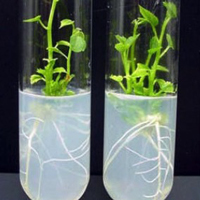Trends in the use of tissue culture, applications and future aspects

Submitted: 21 November 2019
Accepted: 20 December 2019
Published: 7 August 2020
Accepted: 20 December 2019
Abstract Views: 19302
PDF: 3828
Publisher's note
All claims expressed in this article are solely those of the authors and do not necessarily represent those of their affiliated organizations, or those of the publisher, the editors and the reviewers. Any product that may be evaluated in this article or claim that may be made by its manufacturer is not guaranteed or endorsed by the publisher.
All claims expressed in this article are solely those of the authors and do not necessarily represent those of their affiliated organizations, or those of the publisher, the editors and the reviewers. Any product that may be evaluated in this article or claim that may be made by its manufacturer is not guaranteed or endorsed by the publisher.
Similar Articles
- Alexandro Cagliari, Rogerio Margis, Felipe dos Santos Maraschin, Andreia Carina Turchetto-Zolet, Guilherme Loss, Marcia Margis-Pinheiro, Biosynthesis of Triacylglycerols (TAGs) in plants and algae , International Journal of Plant Biology: Vol. 2 No. 1 (2011)
- Faisal Hammad Mekky Koua, Fatima Misbah Abbas, Eisa Ibrahim Elgaali, Mutasim Mohammed Khalafallah, Hind Ahmed Ali Babiker, In vitro host-free seed culture, callus development and organogenesis of an obligatory root-parasite Striga hermonthica (Del.) Benth: the witch-weed and medicinal plant , International Journal of Plant Biology: Vol. 2 No. 1 (2011)
- Beena D.B., Rathore T.S., In vitro cloning of Bambusa pallida Munro through axillary shoot proliferation and evaluation of genetic fidelity by random amplified polymorphic DNA markers , International Journal of Plant Biology: Vol. 3 No. 1 (2012)
- Suganthi Appalasamy, Ning Shu Ping, Arvind Bhatt, Ahmad Sofiman Othman, Nad-Ali Babaeian Jelodar, Chan Lai Keng, Optimization of total RNA isolation method from the aromatic medicinal plant Artemisia annua L. , International Journal of Plant Biology: Vol. 3 No. 1 (2012)
You may also start an advanced similarity search for this article.


 https://doi.org/10.4081/pb.2020.8385
https://doi.org/10.4081/pb.2020.8385



